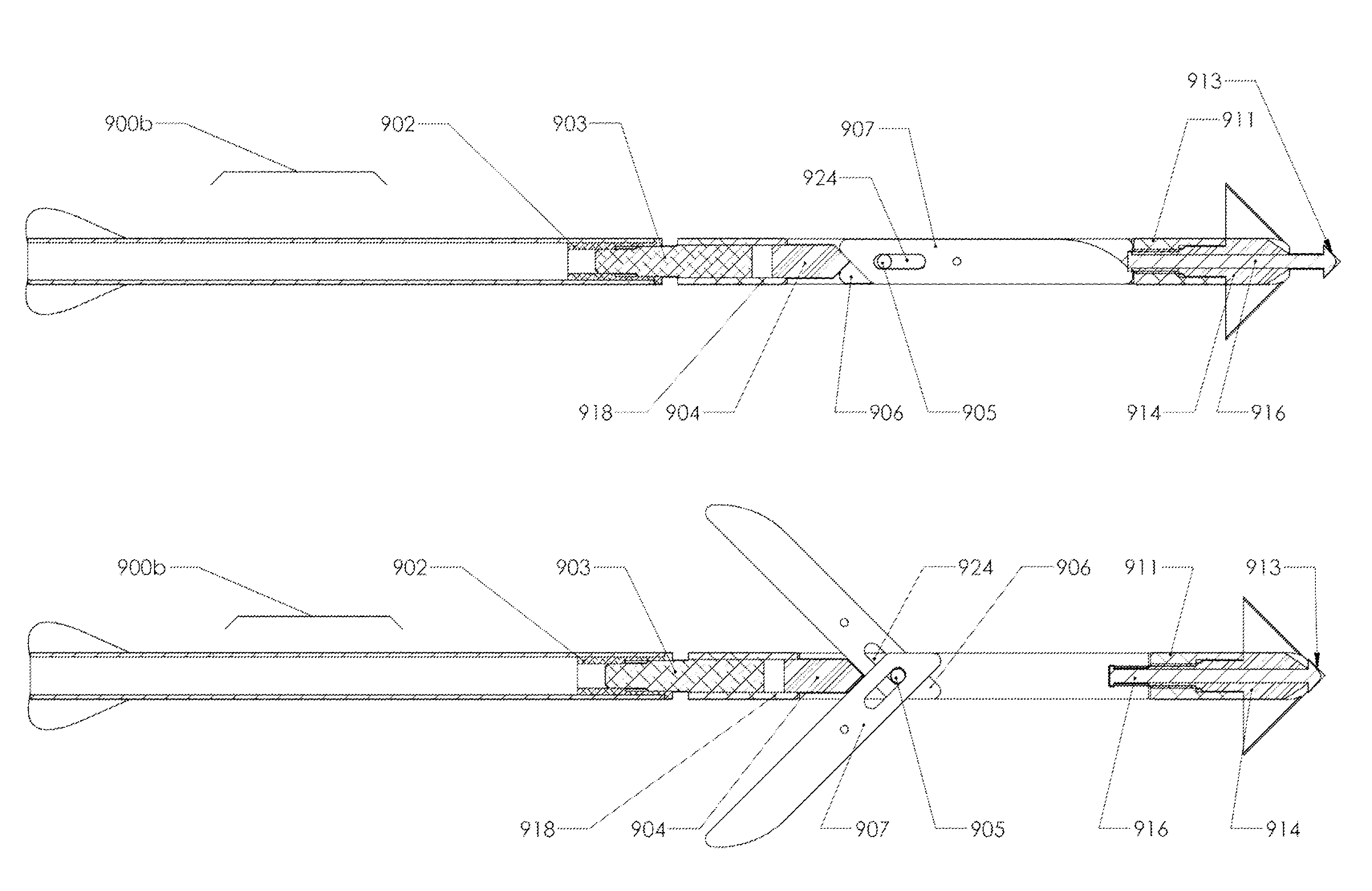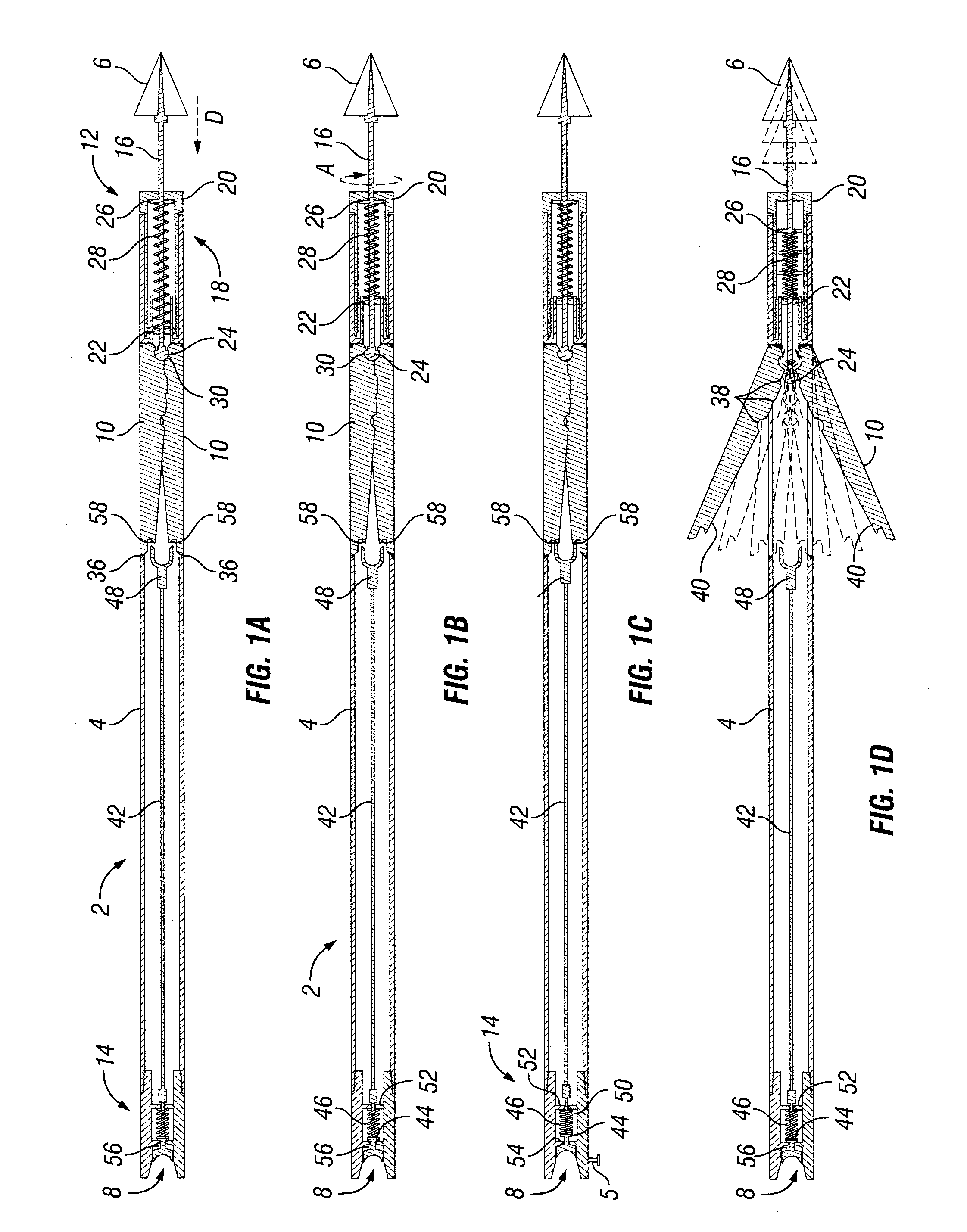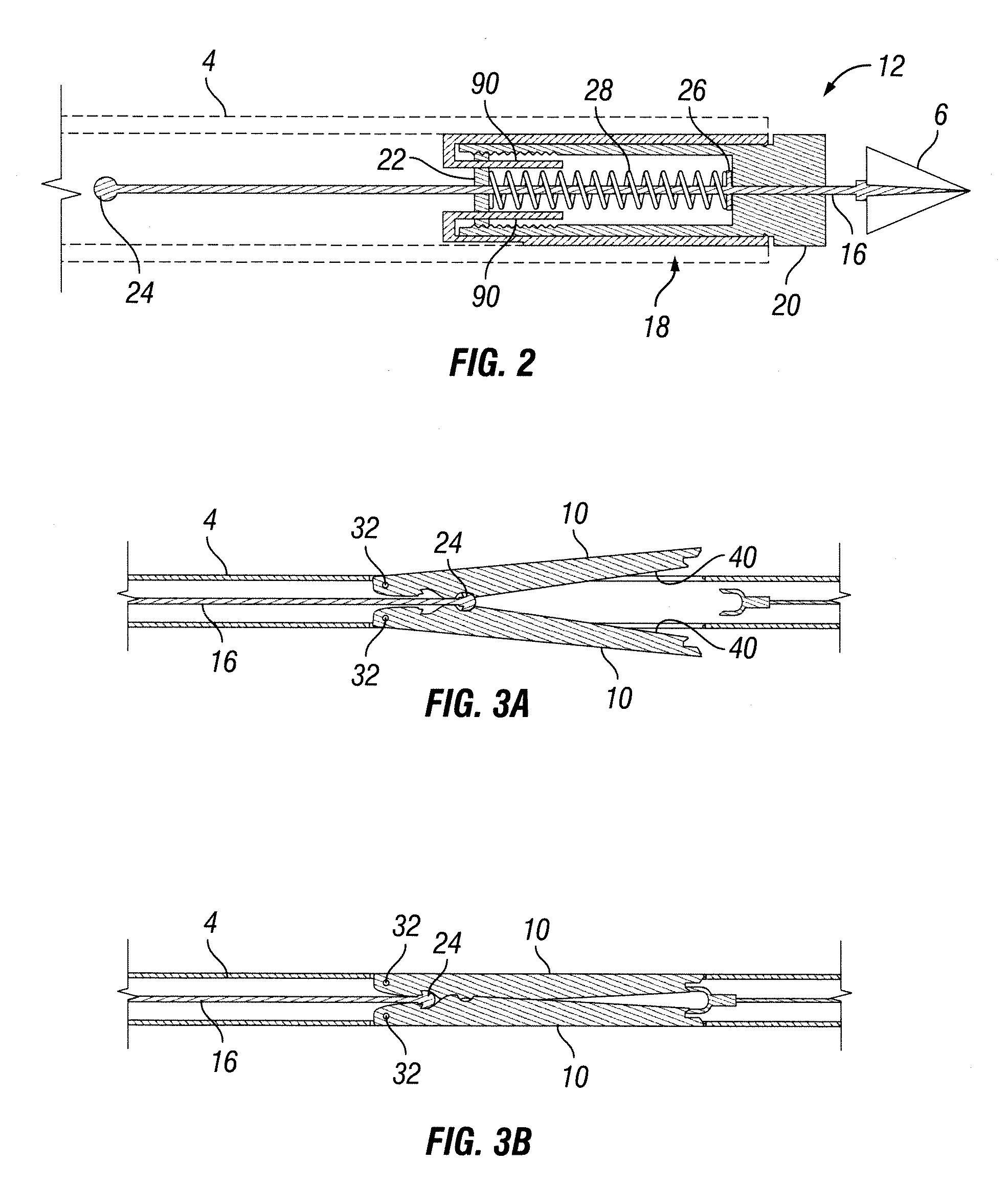Ballistic arrow
a ballistic arrow and arrow head technology, applied in the field of arrows, can solve the problems of affecting reliability, short accounting period, limited design of arrow head, etc., and achieve the effect of adding support and stability, not impeded fligh
- Summary
- Abstract
- Description
- Claims
- Application Information
AI Technical Summary
Benefits of technology
Problems solved by technology
Method used
Image
Examples
Embodiment Construction
[0072]The foregoing aspects, features, and advantages of the present invention will be further appreciated when considered with reference to the following description of preferred embodiments and accompanying drawings, wherein like reference numerals represent like elements. In describing embodiments of the invention illustrated in the appended drawings, specific terminology will be used for the sake of clarity. However, the invention is not intended to be limited to the specific terms used, and it is to be understood that each specific term may include equivalents that operate in a similar manner to accomplish a similar purpose.
[0073]In accordance with the present invention, there is provided a hunting arrow. The hunting arrow may preferably include parts common to known arrows, such as, for example, arrow vanes. For purposes of simplicity, however, all such features are not shown in the drawings. Multiple arrows are represented in the appended drawings. For example, the invention ...
PUM
 Login to View More
Login to View More Abstract
Description
Claims
Application Information
 Login to View More
Login to View More - R&D
- Intellectual Property
- Life Sciences
- Materials
- Tech Scout
- Unparalleled Data Quality
- Higher Quality Content
- 60% Fewer Hallucinations
Browse by: Latest US Patents, China's latest patents, Technical Efficacy Thesaurus, Application Domain, Technology Topic, Popular Technical Reports.
© 2025 PatSnap. All rights reserved.Legal|Privacy policy|Modern Slavery Act Transparency Statement|Sitemap|About US| Contact US: help@patsnap.com



